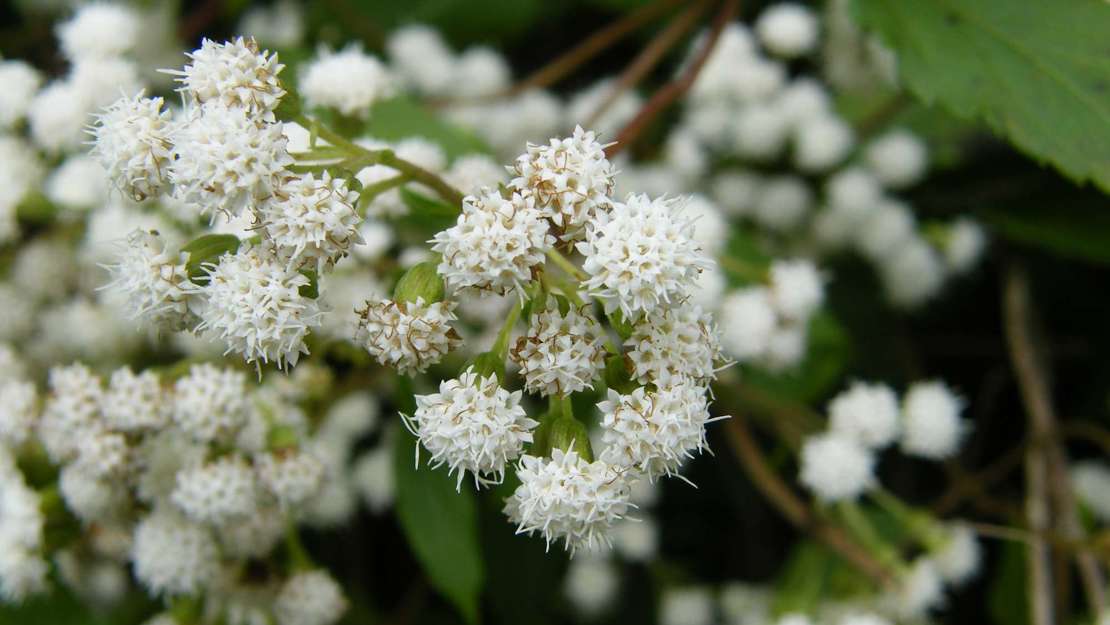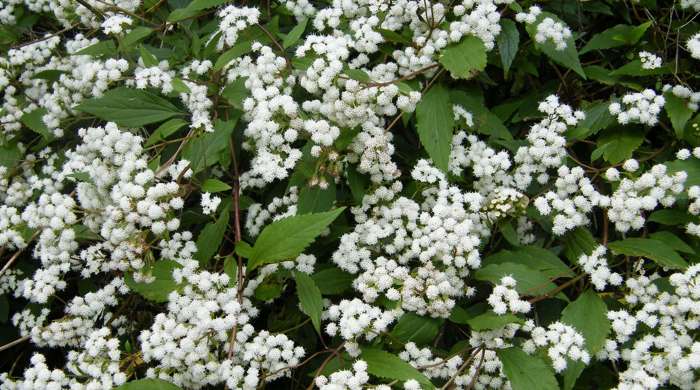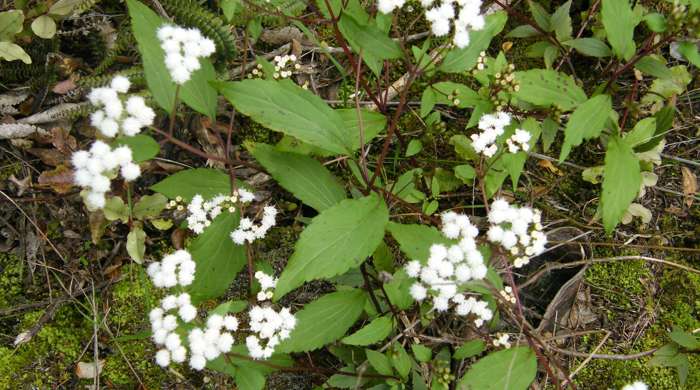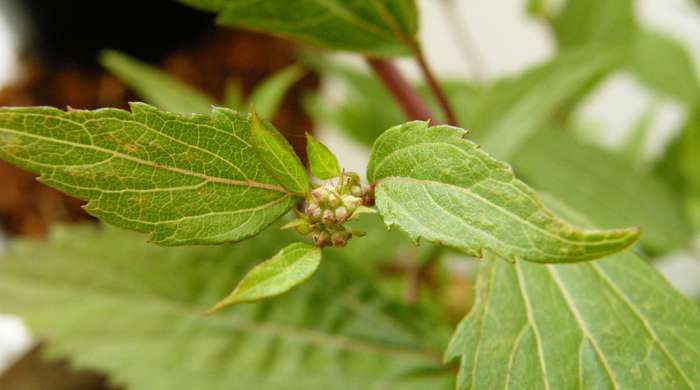Ageratina riparia
Mist flower
Also known as:
Mistweed, river eupatorium
Family: Asteraceae
Origin: Mexico, West Indies

Regional Pest Management Plan (RPMP) status
- Whole region — Sustained control
- Hauraki Gulf Controlled Area Notice pest
General description
Many-stemmed, perennial, erect or scrambling herb about 1.5 m tall. Stems are purple, hairy, opposite and woody when mature. Leaves are willowy, serrated, about 10 x 2.5 cm and opposite. Flowers are small, white and borne in clusters in August – January. Seeds are black and five-angled.
What you need to know
To help protect our environment:
- You must not breed, distribute, release or sell mist flower within the Auckland region.
- You must not plant mist flower within the Auckland region, unless you are transferring an existing plant on your land to another location within the boundaries of the same property.
- You must destroy any mist flower on land that you occupy if it has been planted in breach of the above rules and you are directed to do so by an authorised person.
Habitats
Forest, forest margins, shrublands, wetlands, riparian margins, coastal areas, estuaries, slips, alluvial flats, light gaps.
Dispersal
Seeds dispersed by wind and water. Vegetative spread from layering of trailing stems.
Impact on environment
Forms dense colonies, smothering native plants and preventing native regeneration. Causes sediment build-up, altered flow regimes and potentially flooding along riparian margins.
Control
Site Management
Easiest to control at onset of flowering from August to January. Follow up treated areas 3 times per year. Encourage natural regeneration of native plants or replant treated areas where possible after 2-3 treatments to establish dense ground cover and minimise reinvasion.
Recommended approaches
Physical control
Method: Dig out
Plant parts requiring disposal: All parts.
Disposal options: Remove to greenwaste or landfill.
Biocontrol
Check for the presence of agents:
- Mist flower fungus (Entyloma ageratinae)
- Mist flower gall fly (Procecidochares alani).
For more information about how biocontrol works, see What is biocontrol?
Community agrichemical control recommendations
Basic Growsafe certified: Foliar spray with 200ml glyphosate green per 10L of water.
Certified Handler/Experienced agrichemical user: Foliar spray with 200ml glyphosate green per 10L of water and 20ml penetrant.
Caution: When using any herbicide or pesticide please read the label thoroughly to ensure that all instructions and safety requirements are followed.






